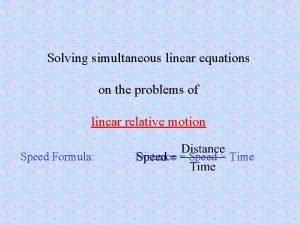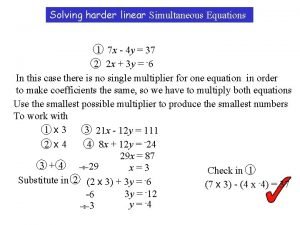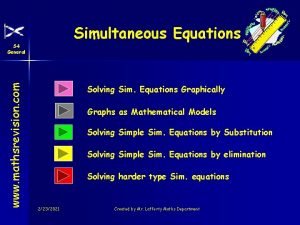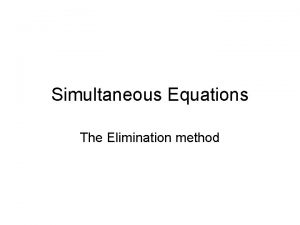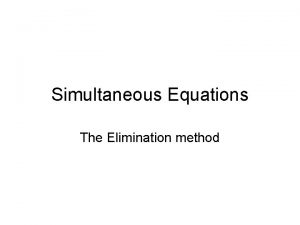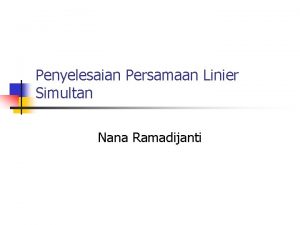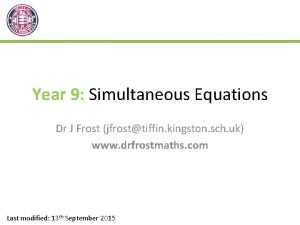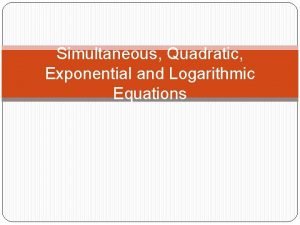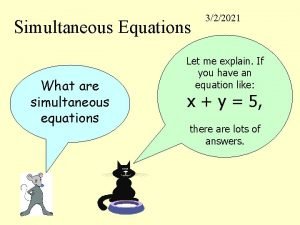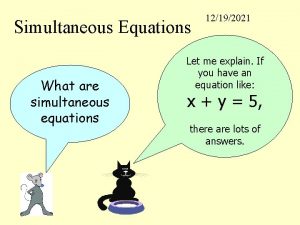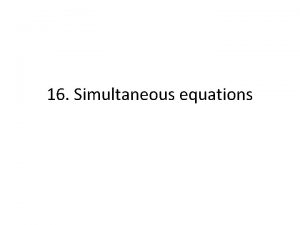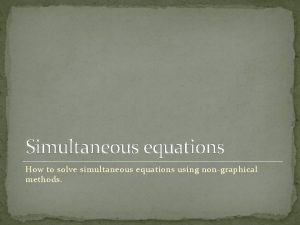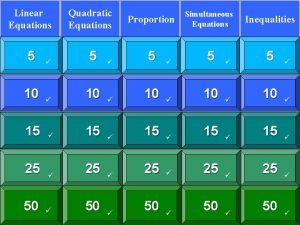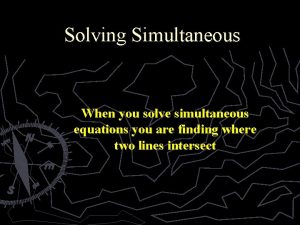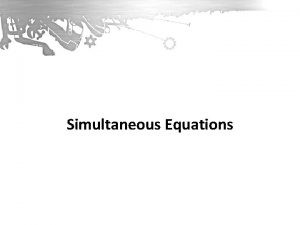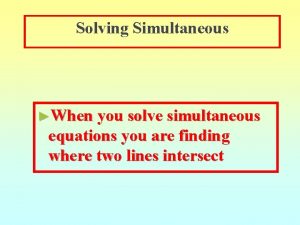Simultaneous Equations Models A simultaneous equations model is











- Slides: 11

Simultaneous Equations Models A simultaneous equations model is one in which there are endogenous variables which are determined jointly. e. g. the demand-supply model In this model q and p are endogenous variables (determined within the model) while y and w are exogenous variables (determined outside the model). u 1 and u 2 are random errors.

The structural form of an econometric model is the form suggested by economic theory. For example, the structural form of the demand curve is: The structural parameters are the alpha parameters from this equation. Most often we will be interested in estimating the structural parameters of the model.

The reduced form of a model is obtained by solving out the structural form so that each equation contains only one endogenous variable. For example: is the reduced form equation for price in the demand-supply model. Note that in the reduced form model each endogenous variable is a function of all the exogenous variables and all the random errors.

Now suppose we wish to estimate the structural parameters of the demand curve: From the reduced form, p is correlated with u 1 and therefore OLS will produce inconsistent estimates. We therefore need to develop alternative estimators if we are going to obtain consistent estimates.

Another example The structural form of the Keynesian income-expenditure model can be written: The reduced form equation for Y is:

It follows that: and therefore OLS estimates of the consumption function will be inconsistent. In fact we can show that:

Indirect Least Squares Use the reduced form estimates to estimate the structural parameters. For example, if we estimate the reduced form of the Keynesian income-expenditure model we obtain:

The relationship between the structural and reduced form parameters is given by the expression: Now compare this with the OLS estimates of the structural form:

The OLS estimate of the structural form parameter is 0. 62 but this is inconsistent. The ILS estimator is 0. 33 and this is a consistent estimator.

Problem: The ILS estimator may not be unique. We have based our calculation around the reduced form equation: but we have an alternative reduced form equation:

The ILS estimator is not unique because the system is overidentified. There are more reduced form parameters than structural parameters.
 What is the difference between models & semi modals?
What is the difference between models & semi modals? Linear simultaneous equations
Linear simultaneous equations Linear equation solver with steps
Linear equation solver with steps Simultaneous equations step by step
Simultaneous equations step by step If the signs are the same in simultaneous equations
If the signs are the same in simultaneous equations Simultaneous equation by elimination method
Simultaneous equation by elimination method Simultaneous equations
Simultaneous equations Persamaan linear simultan
Persamaan linear simultan Persamaan linier simultan
Persamaan linier simultan How to solve a simultaneous equation
How to solve a simultaneous equation Quadratic simultaneous equations dr frost
Quadratic simultaneous equations dr frost Quadratic exponential equations
Quadratic exponential equations

